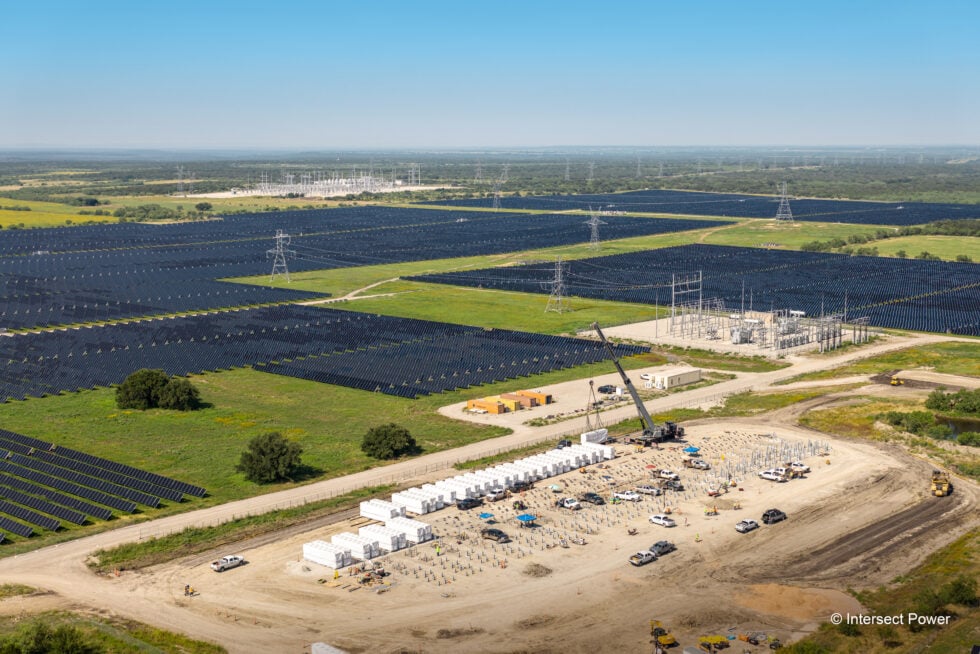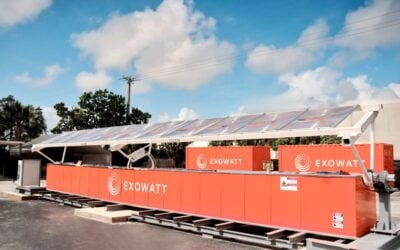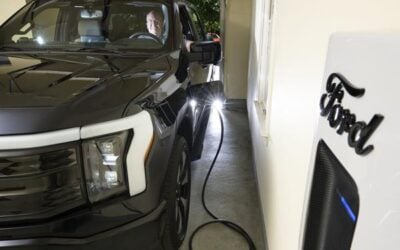
A fire protection and emergency services provider in California, US, has introduced a mandatory risk mitigation payment system for solar PV and energy storage developers.
Fresno County Fire District (FCFD), in the San Joaquin Valley region of central California, will now impose upfront and annual costs on developers to mitigate what it referred to as “health and safety concerns” associated with the technologies.
In coming up with the methodology behind the payment structure, FCFD enlisted the help of financial consultancy firm Capitol Public Finance Group. The firm’s work was presented during the fire district’s most recent board meeting.
With Fresno County being a hotspot for solar and storage, the new payments are expected to impact some of the US’ largest independent power producers (IPPs), including Intersect Power, Clearway Energy Group and NextEra Energy Resources (NEER).
Try Premium for just $1
- Full premium access for the first month at only $1
- Converts to an annual rate after 30 days unless cancelled
- Cancel anytime during the trial period
Premium Benefits
- Expert industry analysis and interviews
- Digital access to PV Tech Power journal
- Exclusive event discounts
Or get the full Premium subscription right away
Or continue reading this article for free
Lack of firefighting resources in Western Fresno County
After consulting with Capitol Public Finance, FCFD decided upon the following payment structure, which it says was calculated based on the expected solar and storage buildout in the county:
| Technology | Upfront Payment (US$/MW) | Annual Payment (US$/MW) |
| BESS | 6,000 | 2,000 |
| Solar | 3,000 | 1,000 |
As stated within the associated funding resolution, “[FCFD’s] resources in the western portion of the County require enhancement to maintain and provide the current level of service to existing communities and to the proposed [solar and storage projects].”
The additional money for FCFD is expected to be put towards a new central area station, additional crew, water tenders and new fire engines.
“District stations on the western side of the County are presently understaffed and under-equipped to handle emergency responses … [in many towns] including Mendota, Tranquility, San Joaquin, Coalinga.”
The fire department’s concerns surrounding solar and storage stems from the “majority” of permitted or soon-to-be-permitted projects within Fresno County being located in “very high fire severity zones.”
Millions of dollars upfront for impacted projects
FCFD has identified 11 projects destined for the county which are expected to be impacted by these new payments, with Intersect Power’s huge 4.6GWh hybrid Darden Clean Energy project being one of the largest.
The Darden project made headlines recently after progressing through the California Energy Commision (CEC’s) opt-in certification programme, for which a final decision is expected this week.
During its assessment of the project, the CEC “thoroughly reviewed and approved of” the FCFD’s mitigation payment structure, after finding it to be “appropriate, useful, and based on sound principles.”
Based on the project comprising 1.15GW each of solar PV and battery storage capacity, Intersect Power will be expected to fork out a cumulative up-front “mitigation payment” of US$10.35 million to Fresno County’s fire department, made up of US$6.9 million for the BESS and US$3.45 million for the solar portion.
On top of that, the developer will also be expected to pay an annual fee of US$3.45 million, which, across the anticipated 35-year lifetime of the project, adds up to over US$120 million.
Details of the 11 projects identified within the analysis carried out on behalf of FCFD, along with links to additional Energy-Storage.news coverage, can be found below:
| Project Name | Developer | BESS Capacity (MW) | Solar Capacity (MW) |
| Darden | Intersect Power | 1,150 | 1,150 |
| San Luis West | Origis Energy | 30 | 125 |
| Sonrisa | EDP Renewables | 184 | 200 |
| Luna Valley | Clearway Energy Group | 200 | 200 |
| Heartland | Plug Power | 300 | 300 |
| Cornucopia | BayWa r.e. | 300 | 300 |
| Key Storage | NEER | 300 | 0 |
| Midway | Middle River Power | 30 | 0 |
| Panoche | Middle River Power | 30 | 0 |
| Rosemary | Longroad Energy | 100 | 0 |
| VCIP | Golden State Clean Energy | 5,000 | 15,000 |
| Total | 7,624 | 17,275 |
Assumptions and disparities
In coming up with the US$/MW figures for solar and storage, Capitol Public Finance Group first estimated the additional cost to the fire department and then worked backwards by dividing this total by the solar and storage capacity destined for the county.
Despite this making sense in theory, the consultancy firm made a series of assumptions and assertions without apparent reasoning.
Due to the higher associated fire risk, Capitol Public Finance allocated 56% of the additional fire department costs to energy storage, with the remainder going towards solar.
“We are estimating approximately 56% of the total costs are allocated to BESS megawatts due to the higher amount of fire fighting needs as compared to solar megawatts,” said the firm. However, as part of its funding methodology report, it did not explain how it came to this figure.
Secondly, in forecasting the cumulative BESS capacity destined for the county, the firm appears to have used storage capacity for some projects, but discharge capacity for others. For example, instead of counting 1,150MW for Intersect Power’s Darden project, it counted 4,600MW. Not only is this incorrect, but it also massively skews the US$/MW figure.
By correcting the BESS capacity figure for Darden from 4,600MW to 1,150MW, the cumulative BESS capacity figure is drastically reduced from 11,058MW to a much smaller 7,624MW.
Additionally, the firm appears to have used readily available capacity figures for some projects, as opposed to their final permitted capacity. In the example of NEER’s Key Energy Storage project, Capitol Public Finance attributed 300MW to the project, however, as reported by Energy-Storage.news, the project is permitted for up to 10 times this.
As with the previous point, the disparity between these figures has the potential to massively change the ultimate US$/MW figure.
The final report noted that FCFD “has the flexibility to alter the list of needs and costs shown … as conditions change. If the overall development of [solar and storage projects in Fresno County ] is greater or lesser than estimated, the amount of personnel and capital costs will adjust proportionally.”
The CEC, Capitol Public Finance and FCFD have all been contacted for comment on the report.





